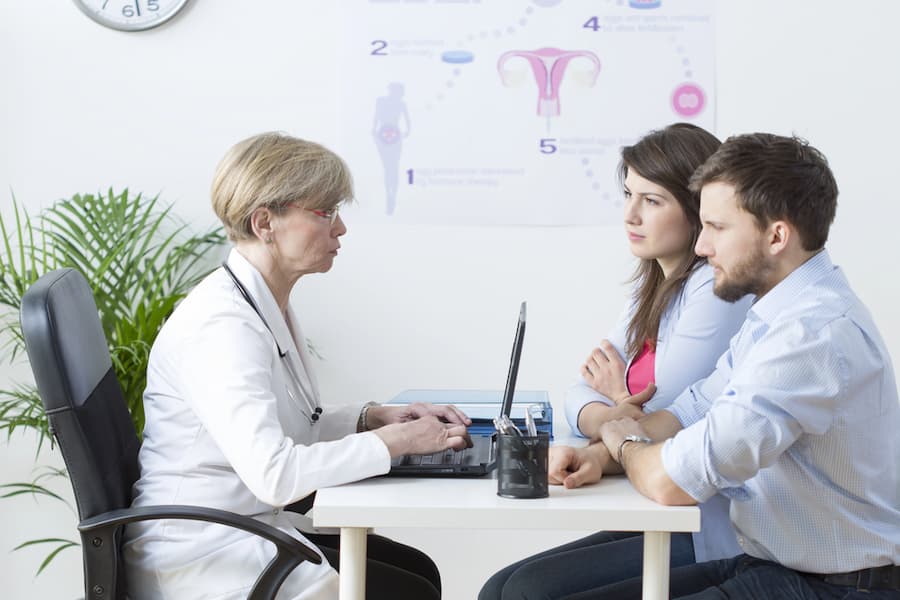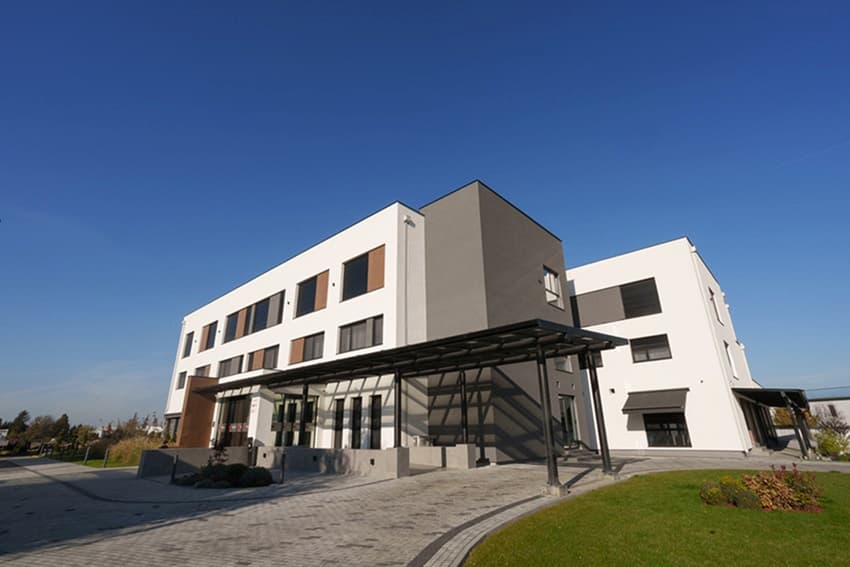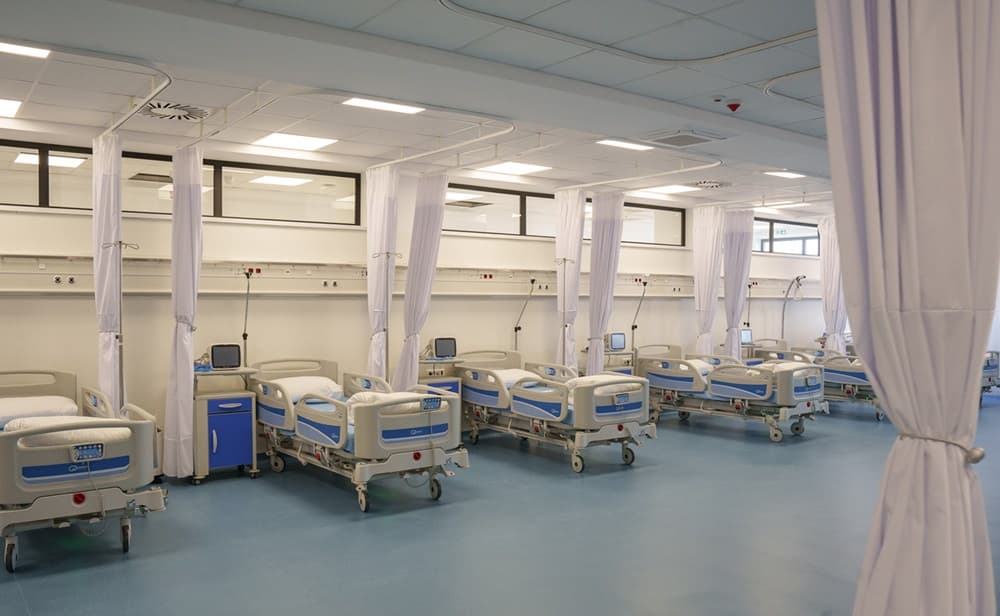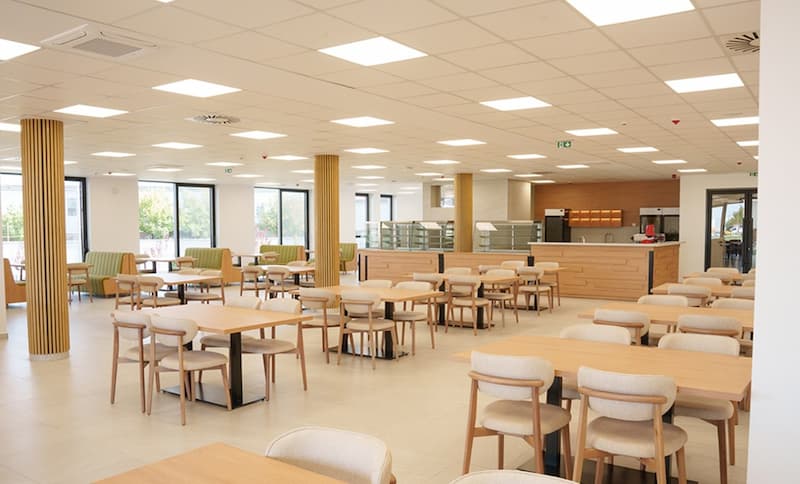Stem cells in reproductive medicine have opened up new frontiers in the treatment and management of infertility. Such therapies utilize the regenerative capabilities of stem cells to enhance fertility both in males and females. From ovarian rejuvenation to improvement of sperm quality, breakthroughs in the field of stem cells are redefining ways towards fertility treatment. In this article, we’ll find an answer to the question ‘how are stem cells linked to reproduction’, and will learn about their potential applications, costs, and stem cell research for reproductive medicine.
What Are Stem Cells in Reproductive Medicine?
One may be wondering, ‘Are stem cells used in reproduction?’ Stem cells, especially mesenchymal stem cells (MSCs) have been found to be highly efficient in reproductive medicine, more so in addressing infertility issues.
- Mesenchymal stem cell for reproduction purposes have the ability to secrete growth factors that promote tissue repair, angiogenesis, and immune modulation. This makes them very beneficial for restoring ovarian and endometrial function.
- Folliculogenesis and spermatogenesis may be supported by MSCs, both in women, by improving follicular development and oocyte quality, and in men, by supporting sperm production. Their effects help regulate cellular environments that are conducive to fertility.
The Role of Stem Cells within Fertility Treatments
How are stem cells used in reproduction? Stem cell research offers a range of promising applications:
- Stem cells have the potential to promote rejuvenation of ovarian function, stimulating tissue regeneration and new oocyte development.
- These could help in the production of healthier eggs, which is very important for successful conception in vitro fertilization (IVF).
- Stem cells might improve the uterine lining’s condition so that it becomes a better site for embryo attachment, reducing implantation failure.
- In males, this therapy assists in spermatogenesis, a process of sperm production.
The factors that influence success include the patient’s age, health status, and the underlying causes of infertility.

Types of Stem Cells Used in Reproductive Therapies
MSCs are widely used stem cells for reproduction because of their regenerative and immunomodulatory properties. These are obtained from the bone marrow, fat, or umbilical cord tissue.
- Using mesenchymal stem cells for reproduction induces the repair of damaged tissue by releasing growth factors and cytokines, improving blood flow, and supporting the regeneration of ovarian follicles, thereby restoring normal ovarian function.
- In cases of Asherman’s syndrome (scarred uterus) or thin lining of the endometrium, MSCs are used to enhance the health and thickness of the uterine lining in women.
- The immunomodulatory properties of MSCs help in controlling the activity of the immune system and decrease inflammation in women suffering from recurrent implantation failure.
Other options, such as endometrial stem cells and reproduction, are being researched but are not yet widely applied in treatment.
Facing fertility challenges? Discover how stem cells can offer new hope to those struggling with infertility, and learn how they could help you achieve your dream of becoming a parent.
Read nowStem Cell Therapy for Ovarian Rejuvenation
Stem cell therapy for ovarian rejuvenation aims to restore ovarian function, particularly in women with conditions like premature ovarian insufficiency (POI) or diminished ovarian reserve.
Stem cells in reproductive medicine are especially indicated for:
- Poor ovarian response in women undergoing IVF treatments.
- Those with POI, where normal ovarian function is lost prematurely. There is a promising role of stem cells in reproductive aging-related conditions.
- Individuals who wish to increase their fertility potential with advancing age.
Can Stem Cells Be Used to Improve Egg Quality?
Stem cells for reproduction have the potential to improve egg quality, addressing infertility issues effectively. Here are key points on the benefits of stem cells in human reproduction.
- Stem cells support rejuvenation of the ovarian tissue for better-quality eggs, hence making successful fertilization possible during the process of IVF.
- Stem cell therapy may enhance the thickness of the uterine lining and, thus, increase embryo implantation to successfully result in pregnancy post-IVF.
Is Stem Cell Therapy for Fertility an Alternative to IVF?
Stem cells for reproduction are being researched as a possible complementary method that can be used along with traditional in vitro fertilization treatments.
Better egg quality and improved embryo implantation may enhance IVF success rates. This means that while stem cells can complement IVF, they are not a standalone replacement for the process.
Get a free online consultation
Considering ways to support your IVF treatment? Stem cell therapy may help improve your chances. Fill out the form for a free online consultation and discover how this treatment can make a difference for you.

Medical Advisor, Swiss Medica doctor
Stem Cells in Male Fertility Treatment
Stem cells for reproduction can support regeneration of damaged testicular tissue caused by trauma, hormonal imbalances, or environmental toxins. This can stimulate the production of healthy sperm. In this regard, stem cell therapy could be a supportive treatment for men suffering from conditions such as azoospermia (no sperm) or oligospermia-(low sperm count).
Can Stem Cells Help Men With Low Sperm Count?
Stem cell therapy can aid men with low sperm count by regenerating sperm-producing cells in the testes. This increases sperm count and improves overall sperm health. Improvements are often noticeable within a few months after treatment.
Recovery Time and Expected Outcomes
Most patients recover quickly after stem cell injections and return to normal activities within a few days.
Regular follow-ups are essential to monitor improvements in ovarian function or sperm production and manage any side effects. Improvement in fertility metrics may take time to appear, often becoming noticeable around three months post-treatment.
Expected outcomes
The primary role of stem cells in reproductive biology is to enhance fertility potential.
| Women | In conditions like premature ovarian insufficiency, stem celsl for reproduction can help restore menstrual cycles, improve ovarian function, and balance hormone levels. Improvement in the success rates of assisted reproductive technologies, such as in vitro fertilization, can be a potential outcome. |
| Men | Promising results for restoring sperm production, especially in conditions like azoospermia or oligospermia. Success rates can be high if viable SSCs are present. |
Safety, Risks, and Ethical Considerations
Therapies with stem cells in reproductive medicine are safe if done under professional supervision. Other minor risks and side effects may include:
- Mild inflammation, redness, or tenderness at the site of injection of stem cells;
- A low-grade fever or flu-like symptoms;
- Mild pain or discomfort from the site of injection.
These minor side effects resolve in a few days and are usually temporary.
Embryonic stem cells are researched for applications within reproductive medicine, but their use involves the destruction of human embryos to obtain such cells. There are significant moral debates and opposition to this, which have reduced the development of therapies using embryonic stem cells.
On the other hand, mesenchymal stem cells, which we use at Swiss Medica, are sourced from adult tissues like bone marrow or fat tissue, ensuring no ethical concerns are involved.
Worried about safety and risks? It’s natural to have concerns. Learn about the potential side effects and safety measures in stem cell treatments, and how we ensure your well-being every step of the way.
Learn moreFinding the Right Clinic for Stem Cell Reproductive Treatments
Finding the right clinic offering stem cell in reproductive medicine can be challenging due to the complexity of the therapy and the varying levels of expertise among clinics. It’s important to consider the clinic’s experience, available treatment options, success rates, and commitment to safety standards to ensure high-quality care.
Choosing Swiss Medica for stem cell therapy means accessing advanced treatments in a professional and supportive environment.
- professional and supportive environment.
- We tailor treatments to your specific condition, from using stem cells in the reproductive system to employing the most advantageous methods of delivery.
- Our fertility specialists blend expert knowledge with personalized care, tailoring treatments to meet the unique needs of each patient.
- We can offer highly qualitative treatments at a more reasonable cost compared to many other clinics worldwide. At Swiss Medica, patients can receive stem cell treatment for €7,000 to €31,000*, which depends on the treatment plan and any additional procedures.
- With Belgrade’s strong international connections, reaching the Swiss Medica clinic and hospital is convenient, allowing you to focus on your treatment and well-being.
*The prices mentioned are indicative and subject to change based on individual factors, including the condition’s severity and the number of stem cells needed. Prices are valid as of January 2025.
Swiss Medica hospital in Serbia offers cutting-edge stem cell treatments for reproductive issues.
Thinking about treatment abroad but feeling uncertain? At Swiss Medica, we understand your concerns. Discover how we make your journey smooth and worry-free, with personalized services designed to help you feel at ease in a new country.
Know all the detailsBreakthroughs in Reproductive Medicine Using Stem Cells
Recent breakthroughs in using stem cells for reproduction have opened new avenues for treating infertility. Here are some significant advancements in stem cell research for reproductive medicine:
| Fertilo | This treatment uses StemRNA Clinical Seed Induced Pluripotent Stem Cells to create ovarian support cells and mature eggs outside the body, improving IVF success rates while reducing hormonal stimulation. |
| In Vitro Gametogenesis (IVG) | Researchers at Kyoto University are developing techniques to produce early-stage sperm and egg cells from human stem cells using specific culture conditions and signaling molecules like BMP. |
| SSC Transplantation | Cultured spermatogonial stem cells (SSCs) transplanted into the testes of infertile males have shown promise in restoring fertility. |
| Ovarian Tissue Freezing | Stem cell-containing ovarian tissue can be frozen before chemotherapy and later re-implanted to restore hormones and fertility. |
| Endometrial Stem Cells | Research on endometrial stem cells and reproduction shows promise for repairing damaged endometrial tissue, offering potential treatments for conditions like Asherman syndrome. |
| Reproductive Aging | Studies explore the role of stem cells in reproductive aging-related conditions and in treating premature ovarian failure (POF). |
Frequently Asked Questions About Stem Cell Therapy in Reproductive Medicine
1. How long does recovery take after a stem cell treatment?
Recovery time is variable, but generally short; most patients are able to return to normal activities within a few days.
2. Is cell therapy a permanent fix?
No, cell therapy cannot be considered a permanent or guaranteed fix for infertility. However, cell therapy offers a chance at overcoming fertility issues and conceiving a child.
3. Why are stem cells used in reproduction?
Stem cells hold the potential to enhance fertility by renewing ovarian function and increasing sperm production. They can also improve egg and sperm quality.
Send a request
Now that you’re familiar with the benefits of stem cells in reproductive medicine, you can explore how they may be relevant to your situation. Complete the form for a free online consultation, and our experts will assist you in exploring your fertility options.

Medical Advisor, Swiss Medica doctor
List of References
Volarevic V, Bojic S, Nurkovic J, Volarevic A, Ljujic B, Arsenijevic N, Lako M, Stojkovic M. Stem cells as new agents for the treatment of infertility: current and future perspectives and challenges. Biomed Res Int. 2014;2014:507234. doi: 10.1155/2014/507234. Epub 2014 Apr 14. PMID: 24826378; PMCID: PMC4009115.
R. Vassena, C. Eguizabal, B. Heindryckx, K. Sermon, C. Simon, A.M.M. van Pelt, A. Veiga, F. Zambelli, on behalf of the ESHRE special interest group Stem Cells, Stem cells in reproductive medicine: ready for the patient?, Human Reproduction, Volume 30, Issue 9, September 2015, Pages 2014–2021, https://doi.org/10.1093/humrep/dev181
Rosner, M., Horer, S., Feichtinger, M. et al. Multipotent fetal stem cells in reproductive biology research. Stem Cell Res Ther 14, 157 (2023). https://doi.org/10.1186/s13287-023-03379-4
Mirfakhraie, R., Lasemi, M., Mehravar, M., Halvachi, D., Salimi, M., & Roshandel, E. (2023). Mesenchymal stem cell transplantation for infertility treatment: A review. Biomedical Research and Therapy, 10(6), 5744-5756. https://doi.org/10.15419/bmrat.v10i6.815
Salinas-Hernández, J., Rodríguez-Martínez, G., Pérez-García, M., González-Quintero, S., & Rodríguez-Padilla, C. (2023). Mesenchymal stem cells and their potential use in ovarian rejuvenation and infertility treatment. Life Sciences, 312, 121098. https://doi.org/10.1016/j.lfs.2023.121098
Cucinella, G.; Gullo, G.; Catania, E.; Perino, A.; Billone, V.; Marinelli, S.; Napoletano, G.; Zaami, S. Stem Cells and Infertility: A Review of Clinical Applications and Legal Frameworks. J. Pers. Med. 2024, 14, 135. https://doi.org/10.3390/jpm14020135
L Cacciottola, F Vitale, J Donnez, M M Dolmans, Use of mesenchymal stem cells to enhance or restore fertility potential: a systematic review of available experimental strategies, Human Reproduction Open, Volume 2023, Issue 4, 2023, hoad040, https://doi.org/10.1093/hropen/hoad040
Chauhan, A., & Chaudhary, A. (2020). Stem cell therapy in reproductive medicine. International Journal of Reproduction, Contraception, Obstetrics and Gynecology, 9(9), 3664-3670. https://doi.org/10.18203/2320-1770.ijrcog20203827
Ahmadian S, Mahdipour M, Pazhang M, Sheshpari S, Mobarak H, Bedate AM, Rahbarghazi R, Nouri M. Effectiveness of Stem Cell Therapy in the Treatment of Ovarian Disorders and Female Infertility: A Systematic Review. Curr Stem Cell Res Ther. 2020;15(2):173-186. doi: 10.2174/1574888X14666191119122159. PMID: 31746298.
Wu JX, Xia T, She LP, Lin S, Luo XM. Stem Cell Therapies for Human Infertility: Advantages and Challenges. Cell Transplant. 2022 Jan-Dec;31:9636897221083252. doi: 10.1177/09636897221083252. PMID: 35348026; PMCID: PMC8969497.
Abdelaal NE, Tanga BM, Abdelgawad M, Allam S, Fathi M, Saadeldin IM, Bang S, Cho J. Cellular Therapy via Spermatogonial Stem Cells for Treating Impaired Spermatogenesis, Non-Obstructive Azoospermia. Cells. 2021 Jul 14;10(7):1779. doi: 10.3390/cells10071779. PMID: 34359947; PMCID: PMC8304133.
Saha S, Roy P, Corbitt C, Kakar SS. Application of Stem Cell Therapy for Infertility. Cells. 2021 Jun 28;10(7):1613. doi: 10.3390/cells10071613. PMID: 34203240; PMCID: PMC8303590.
Wang J, Liu C, Fujino M, Tong G, Zhang Q, Li XK, Yan H. Stem Cells as a Resource for Treatment of Infertility-related Diseases. Curr Mol Med. 2019;19(8):539-546. doi: 10.2174/1566524019666190709172636. PMID: 31288721; PMCID: PMC6806537.
Inside Precision Medicine. (2023, December 13). Breakthrough in germ cell development for future infertility treatments. Inside Precision Medicine. https://www.insideprecisionmedicine.com/topics/precision-medicine/breakthrough-in-germ-cell-development-for-future-infertility-treatments/
MD, Pediatrician, Regenerative Medicine Specialist











